Edogawa Rampo, Founder

William Varteresian
All Japanese names are presented in their original order, last name first. In the case of the pen name "Edogawa Rampo" "Edogawa" is the surname and "Rampo" the given name. When only one name is used, the author is referred to as "Rampo" in accordance with common Japanese usage.
Few authors can be said to have had a greater influence on the development of Japanese mystery fiction than Edogawa Rampo (1894–1965). In a literary career that spanned over forty years, Rampo penned a succession of wildly popular detective stories aimed at both mature and young adult readers. Rampo was also active as a critic and theorist of detective fiction, publishing numerous essays and later acting to promote other Japanese mystery authors and the mystery genre in general. In both capacities, Rampo's work helped to develop Japanese mystery fiction into a distinctive national tradition and to establish the genre's enduring popularity.
Born Hirai Tarō on October 21st, 1894, in Mie Prefecture, Rampo became enamored of mystery fiction at a young age through Japanese translations and adaptations of Western detective stories by writers such as Kuroiwa Ruikō (1862–1920), the journalist whose adaptations of works by Èmile Gaboriau, among numerous other authors, first sparked many Japanese readers' interest in the modern mystery genre. When he graduated from Waseda University in 1916 with a degree in economics, Rampo felt that Japan offered no opportunities for the creation of original mysteries, and took a series of odd jobs around Tokyo and Osaka. For seven years Rampo worked as a used bookseller, a newspaper reporter, and a noodle vendor, among other occupations. At the age of 28, Rampo finally saw print in the April 1923 issue of the magazine Shin-seinen (New Youth), which often featured translated detective stories. His short story "The Two-Sen Copper Coin" (1923), a witty mystery that centers on an ingenious cipher, was the first full-length detective story by a Japanese author. The piece was billed as a match for popular Western entries in the genre.
It was at this point that Edogawa Rampo assumed the pen name by which he is most widely known, and which he crafted as a kanji transliteration of the name of Edgar Allan Poe. In the same way that Poe is frequently regarded as the progenitor of modern mystery fiction, Edogawa Rampo is often regarded as having kickstarted the genre's development in Japan.
Following the publication of "The Two Sen Copper Coin," Shin-seinen attracted many new mystery writers and became the genre's most representative publication in pre-World War II Japan. Rampo continued to publish regularly throughout the following decade, producing a diverse body of work ranging from the chilling and grotesque "The Human Chair" (1925) and Beast in the Shadows (1928) to the comparatively lighthearted capers of The Black Lizard (1934). In 1925 he introduced his most enduringly popular character, the private detective Akechi Kogorō, in the short story "The Case of the Murder on D. Hill". Akechi ultimately went on to appear in 13 novels and 8 short stories, as well as a series of more than two dozen novels and short stories aimed at young readers (1936–1962). Numerous other authors have since produced adaptations, pastiches, and parodies of Rampo's Akechi stories across a wide range of media including novels, films, television serials, comic books and video games. Akechi Kogorō, along with the Boy Detectives Club led by his assistant Kobayashi Yoshio, and their rival The Fiend With Twenty Faces, is probably the most recognizable character in all of Japanese detective fiction.
During the Second World War government censorship intensified, placing severe restrictions on the content of published fiction. Crime and detective fiction in particular came under heavy scrutiny, and Rampo worried that his life as an author might be at an end.
Shortly after the war, Rampo resumed his previous literary activities. Although far less prolific a writer of fiction than he had been in the prewar period, Rampo's output as an essayist expanded throughout the 1950s as he increasingly shifted his attention from the production of detective fiction to its analysis and promotion. As the editor-in-chief of the mystery magazine Hōseki (Jewel), Rampo did much to promote the genre's emerging talents.
Rampo played a key role in the formation of Mystery Writers of Japan. In 1955 the organization gave out the first Edogawa Rampo Prize, an award for unpublished mystery novels which has continued to be awarded annually ever since. The prize has helped to launch the careers of numerous prominent mystery authors, including Togawa Masako, Higashino Keigo, and Kirino Natsuo.
Rampo passed away due to a cerebral hemorrhage on July 28th, 1965. He was 70 years old and left behind him a legacy that continues to have a profound influence on the genre in which he wrote.
What is "My Favorite Mystery"?
The "My Favorite Mystery" column presents a series of essays selected for the English-reading public from those published in each issue of The Japan Library of Mystery Literature News, the semi-annual newsletter of The Japan Library of Mystery Literature.
Established in the Ikebukuro area of Tokyo in 1999, The Japan Library of Mystery Literature is the only library in Japan that specializes in mystery literature. It holds more than fifty thousand Japanese-language mystery novels, reference books and magazines, and visitors to the library can pick out these materials directly from its open shelves except for in the case of a few rare books.
http://www.mys-bun.or.jp/index.html
My Favourite Mystery #1
by Yokoyama Hideo
Hako no naka no shitsuraku (Paradise lost in the box) (author: Takemoto Kenji)
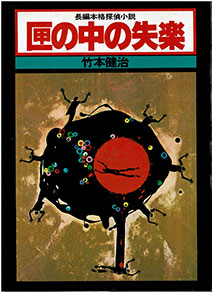
I am perhaps the prime example of one of those writers who wants to write books rather than read them, and so for me to read a book is to perform "an extraordinary act." It could also be said that I harbor an extraordinarily high expectation of each book that I read. I have always been like this. Once I decide to read a book, then I tidy up my room, wipe my table clean and wash my hands thoroughly with soap. Only after this do I sit and closely examine the cover of the book, muttering to myself, "If you're no good, then I'll kill you."
With this book, too, I hurriedly completed this ritual and then started to read it. Far from me killing the book, it killed me! Drawn into the labyrinthine maze of the plot, it became impossible for me to turn back. I felt the pleasure of drowning in a sea of knowledge. As one locked room led to another, the solution to each riddle only begat another one in its place, and each unexpected twist in the story turned out to be just one step towards the next unexpected twist. Now, twenty years since I read the book, I cannot even recall the plot to my mind.
It is because of experiences like this that I cannot stop reading books. Although I only do it occasionally, I will doubtless once again summon up my determination and wash my hands with soap.
(Written in June, 2003)
Translated by Adrian Pinnington
***
Information (Additional text by Shimpo Hirohisa; Translated by Kimura Jiro)
[Writer's Profile]
Yokoyama Hideo (横山秀夫) was born in Tokyo in 1957. The former newspaper reporter won the 1998 Matsumoto Seicho Prize for his short story, "Season of Shadows" (original title:「陰の季節」"Kage no kisetsu"), and it led him into crime writing. His police fiction has the distinctive characteristic that it features desk police officers rather than field investigators. His short story, "Motive" (original title:「動機」"Dōki"), won the 2000 MWJ Award, and it was published in the May 2008 issue of Ellery Queen's Mystery Magazine. His novel, Six Four (Quercus, London, 2016; original title:『64 Rokuyon』, 2012), was shortlisted for the 2016 CWA International Dagger Award, and he was the first Japanese writer to be a Dagger Award finalist. More than a half of his works have been published in Taiwan and mainland China, and more English translations are expected to come out in the near future.
[Writer's Favorite Mystery]
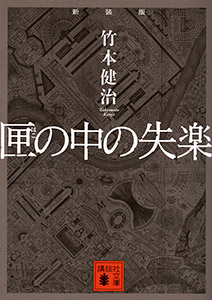
Hako no naka no shitsuraku (『匣の中の失楽』Paradise Lost in the Box, 1978) is Takemoto Kenji's (竹本健治, 1954- ) first novel. He wrote it in his 20's, and it was appreciated highly by mystery aficionados, and dubbed "the fourth strangest book of the Japanese mystery fiction," chronologically following Oguri Mushitaro's Kokushikan satsujin jiken (小栗虫太郎『黒死館殺人事件』Chateau Plague Murder Case, 1935), Yumeno Kyusaku's Dogura magura (夢野久作『ドグラ・マグラ』Dogra Magra, or the Inferno in the Brain, 1935), and Nakai Hideo's Kyomu e no kumotsu (中井英夫『虚無への供物』An Offering to Nothingness, 1964). Although it has been published both in Taiwan (as『匣中的失樂』) and in mainland China (as『匣中失樂』), none of his works have been translated into English. Takemoto used to be a cult figure loved by a small number of hard-core mystery readers, but his readership is now growing as his recent novel, Ruikō meikyu (『涙香迷宮』Ruikō Labyrinth, 2016), has been highly praised and placed on the annual best mystery lists of several media outputs. This novel is centered on the ciphers Takemoto made up himself as if they had been left behind by Japanese mystery pioneer Kuroiwa Ruikō (黒岩涙香, 1862-1920).
My Favourite Mystery #2
by Higashino Keigo
Kuroi gashu (The Black Art Book) (author: Matsumoto Seicho)
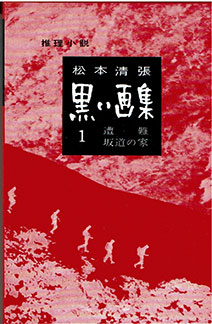
Although I never read books as a child, after I became a high school student, I came across mystery novels and quickly succumbed to their charm, eventually becoming addicted to them. What I often read then were "Kappa" novels in the famous fiction series published by Kobunsha, and I especially liked those by Matsumoto Seicho. I began by reading his full-length novels, but after I had finished all of those, I found that only the short stories were left.
To tell the truth, at that time, I had no interest at all in short stories. I suppose I had decided, quite arbitrarily, that their brevity must make them that much less interesting. But as there was nothing else by Seicho left for me to read, I took up one of his collections of short stories. That was Kuroi gashu (The Black Art Book).
When I read it, I was amazed. Although the stories were short, the puzzles contained in them were full of interest, while the truths revealed were powerful and intense. Moreover, the tone and atmosphere of each story was completely different. The ones that especially made an impression were "Amagi Pass" and "The House on the Slope." In both of these pieces, the true character of human beings is brilliantly depicted.
When are human beings moved to commit crimes? How do they fall into ruin? This is a book from which I learnt the answers to such questions.
(Written in September, 2010)
Translated by Adrian Pinnington
***
Information (Additional text by Shimpo Hirohisa; Translated by Kimura Jiro)
[Writer's Profile]
Higashino Keigo (東野圭吾) was born in Osaka in 1958. While working as an engineer, he kept entering for the Edogawa Rampo Prize competition till he finally won it in 1985 with Hokago (『放課後』After School), which became his debut novel.Following this, he published a wide variety of mystery novels and was nominated for an MWJ Award and one other literary award more than 10 times without winning until 1999, when he received an MWJ Award for Naoko (original title:『秘密 (Secret)』Himitsu), a fantasy mystery novel. He gained wide attention with his roman noir, Journey Under the Midnight Sun (original title:『白夜行』Byakuya-kou), and then won the Naoki Prize, the most famous popular literature award, in 2006 with The Devotion of Suspect X (original title:『容疑者Xの献身』Yogisha X no kenshin) , an inverted mystery novel, establishing himself as one of the most popular writers in Japan. Since then, he has been enjoying a winning streak, with each new novel selling well, and the older ones, written during his learning-the-ropes days, remaining long sellers. He served as the president of MWJ from 2009 through 2013. The Devotion of Suspect X was nominated for the 2012 Edgar Award in the best novel category and for the 2012 Barry Award in the best first novel category. Even though very few novels out of his nearly 100 works of fiction have been translated into English, it is expected that more will be translated in the near future.
[Writer's Favorite Mystery]

Matsumoto Seicho(松本清張 1909-1992) was one of the most renowned mystery writers in Japan. Kuroi Gashuu (『黒い画集』The Black Art Book, 1959-1960) is one of his major story collections, and it contains nine novelettes and short stories. He was generally called "Seicho" (an alternative pronunciation of his given name Kiyoharu 清張). Since he was of the opinion that the ingeniously brilliant Great Detectives common in detective fiction lack reality, he very seldom created a series character and almost all of his fictions have different main characters, such as policemen, newspaper reporters, or office workers. The stories in "The Black Art Book" do not have any recurring characters and, like his other story collections, it is perhaps hard to find any theme. Some might say this theme is "a perpetrator's dark inner landscape," but this applies to most of his stories.
Only one story in this collection has been translated into English: "Secret Alibi" (original title:「証言(The Witness)」"Shogen"; in Ellery Queen's Mystery Magazine, November 1980; and Murder in Japan: Japanese Stories of Crime and Detection, 1987). Therefore, the two stories recommended by Higashino, "Amagi pass" (original title:「天城越え」"Amagi-goe") and "The House on the Slope" (original title:「坂道の家」"Sakamichi no ie"), remain untranslated into English, but the former was turned into a 1983 movie directed by Mimura Haruhiko (三村晴彦) and co-produced by Nomura Yoshitaro (野村芳太郎). Nomura himself was the director of Inspector Imanishi Investigates (original title:『砂の器 (Container in Sand)』Suna no utsuwa), and many other movies based on Seicho's works.
My Favourite Mystery #3
by Akagawa Jiro
And Then There Were None (author: Agatha Christie)
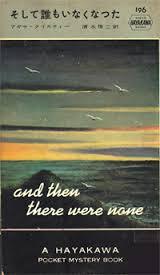
Ever since I first became a writer, whenever I have been asked to name my favorite mystery, this is the title I have given in reply.
Ten people gather on a lonely island, and one by one they are killed, until finally all of them are dead. At the time, this must have been a revolutionary conception, but this sort of weird idea appears in any number of TV dramas and so on that are popular now. Yet, the reason why this And Then There Were None continues to have an appeal which goes beyond the mere fact that it is a classic of the mystery genre, lies in the skill of the author in giving her characters a vivid existence through a depiction which is neither too detailed nor too sparse, and in creating a drama which overflows with tension.
It is indeed the author's terse style which allows these ten characters on Indian Island to overcome history and continue living on today.
However many times I read this work, it never loses in interest. Of how many mysteries can this really be said? This is entirely due to the rare skill of Christie's 'narrative voice.' It seems to me that it is precisely this which is most lacking in today's thick mysteries, in which everything is described down to the last detail.
(Written in March, 2010)
Translated by Adrian Pinnington
***
Information (Additional text by Shimpo Hirohisa; Translated by Kimura Jiro)
[Writer's Profile]
Akagawa Jiro (赤川次郎) was born in Fukuoka in 1948. Though little known in the English-speaking world, he is a top-ranking popular writer in Japan, with more than 600 books under his belt. He has many faithful followers especially among female readers ranging widely from teenagers to office workers and housewives, and it is not rare that two generations of mothers and daughters are his big fans. With a reputation for clever plotting and a humorous style, his writing nevertheless contains a severe awareness of the realities of life.
In 1976, he debuted by winning a magazine-sponsored New Mystery Writers' Prize for "Yurei Ressha" (「幽霊列車」Ghost Train), in which a co-ed logically solves the mysterious disappearance of all the passengers between two stations of a local railway. Since then, he has written more than 25 collections of the "Yurei" short stories. More popular than the "Yurei" series is the "Mike-Neko Holmes" (Holmes the Calico Cat) series, with more than 50 novels and short story collections, in which a female cat named Holmes helps her police detective keeper solve crimes by pointing out important clues without speaking any human languages. For these achievements, he received the 2006 Japan Mystery Literature Award for Lifetime Achievement (equivalent to the Mystery Writers of America's Grand Master Award) and other literary awards.
Midnight Suite (『真夜中のための組曲』Mayonaka no tame no Kumikyoku), a short story collection, and Three Sisters Investigate (『三姉妹探偵団』San Shimai Tanteidan), a novel, have been translated into English but only sold in Japan, while "Beat Your Neighbor Out of Doors" (「沿線同盟」Ensen Domei) was printed in the March 1992 issue of Ellery Queen's Mystery Magazine, and later collected in The Deadliest Games: Tales of Psychological Suspense from Ellery Queen's Mystery Magazine (edited by Janet Hutchings; Carroll & Graf, 1993).
[Writer's Favorite Mystery]
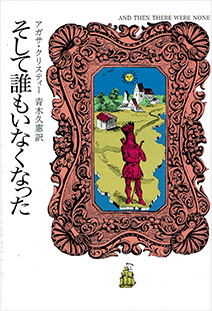
English writer Agatha Christie (1989-1976) has been very popular in Japan, too, and since a complete set of her works (excluding her poetry collections and some of her plays) has been published in paperback, her entire works are easily available nowadays. Especially, And Then There Were None (1939) is much loved, along with The Murder of Roger Ackroyd (1929), and has become the number-one favorite among the Japanese Agatha Christie Fan Club membership, and has been replacing Ellery Queen's The Tragedy of Y as the most popular novel among general overseas mystery readers in Japan these days. Since the first Japanese edition was published in 1955, this novel has been getting more readers steadily, and since being reissued in paperback in 1976, it has been selling explosively. Many Japanese mystery novels have gotten inspiration from it, including Ayatsuji Yukito's (綾辻行人) The Decagon House Murders (『十角館の殺人』Jukkakukan no satsujin; 1987). In 2017, it was adapted by Nagasaka Shukei (長坂秀佳), an Edogawa Rampo Award winner and screenwriter, for a two-part TV drama set in modern-day Japan, and this dramatization attracted a lot of media attention.
My Favourite Mystery #4
by Miyabe Miyuki
Jiken (An Incident) (author: Ooka Shohei)
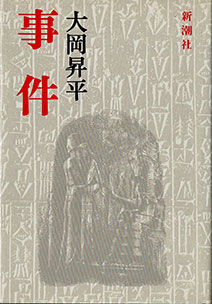
When I was in my twenties, I worked for about six years in a law firm. I had moved there after working as a female office clerk in an ordinary company, but the reason I chose to make this move was that I had read this novel, Jiken.
The novel is a solid, substantial work which throws into relief the actual workings of the legal system, both from the point of view of those who judge and that of those who are judged. What is particularly impressive about it is the fact that incident dealt with is a small one, one that today would probably not even rate a brief mention in the back pages of a newspaper. However, the significance of an incident cannot only be measured by the extent to which it is reported in the media. Even the most unexciting of incidents will represent a pressing threat or tragedy to the lives of those caught up in it, and the fact that we must always respect the truth of the incident is clearly incorporated in the novel. Today, when Japanese people need more than ever to be concerned with the way in which cases are tried in court, this masterpiece deserves to be read again by more people in many different walks of life.
The dramatization of the novel broadcast by NHK was as splendid as the original work. The actor who acted the part of the lawyer who worked among ordinary people was Wakayama Tomisaburo, and he seemed to be tailor-made for the part. Even today, I nurse a hope that I might one day be able to depict a lawyer who deserves to stand shoulder to shoulder with "Mr. Kikuchi," the lawyer in the novel.
(Written in March, 2009)
Translated by Adrian Pinnington
***
Information (Additional text by Shimpo Hirohisa; Translated by Kimura Jiro)
[Writer's Profile]
Miyabe Miyuki (宮部みゆき) was born in Tokyo in 1960.Since making her debut by winning a fiction magazine's first mystery story contest in 1987, she has been writing a wide range of fiction from mystery to period to SF to fantasy to horror. She has won more than ten awards -- at least one award in almost every popular genre. In the mystery genre, she won a Mystery Writers of Japan (MWJ) Award for The Sleeping Dragon (Kodansha America, 2010; original title:『龍は眠る』Ryu wa nemuru, 1991;), in which psychics are deeply involved in a kidnapping case, while Brave Story (Viz Fiction, 2007; original title:『ブレイブ・ストーリー』Bureibu sutori, 2003) won the 2008 Batchelder Award as the most outstanding children's book originally published in a language other than English in a country outside the United States. Even though she often depicts a cruel reality, her gentle and soft writing style leaves a good feeling after reading and leads many readers -- young and old, male and female – to love her works. Other novels which have been translated into English, including e-books, are (in chronological order of the original Japanese edition): The Devil's Whisper (Kodansha America, 2007; original title:『魔術はささやく』Majutsu wa sasayaku, 1989); All She Was Worth (Mariner Books, 1999; original title:『火車』Kasha, 1992); Crossfire (Kodansha America, 2006; original title:『クロスファイア』Kurosufaia, 1998); Puppet Master (Creek & River, 2014-2016; original title:『模倣犯』Mohohan, 2001); Shadow Family (Kodansha America, 2006; original title:『R.P.G.』R.P.G., 2001), Ico: Castle in the Mist (Haikasoru, 2011; original title:『ICO--霧の城』Ico: Kiri no shiro, 2004); The Book of Heroes (Haikasoru, 2010; original title:『英雄の書』Eiyu no sho, 2009); and The Gate of Sorrows (Haikasoru, 2016; original title:『悲嘆の門』Hitan no mon, 2015). In addition, the English version of a short story collection, Apparitions: Ghosts of Old Edo (Haikasoru, 2013; original title:『あやし〜怪〜』Ayashi, 2000) was also published in the States.
[Writer's Favorite Mystery]
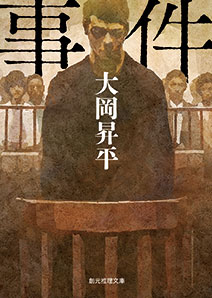
Jiken (『事件』An Incident) was serialized in a newspaper under a different title from 1961 through 1962, but it took a long time for the author to revise the novel in order to make sure of the accuracy of the court scenes before publishing it in book form in 1977. The novel won an MWJ Award the next year. Even though Ooka Shohei (大岡昇平 1909-1988) had written two other mystery novels, he was not considered a specialized mystery writer, but an eminent mainstream writer, famous for writing a war novel, Reite senki (『レイテ戦記』A Record of the Battle of Leyte Gulf, 1971) as well as romance novels and historical ones. Originally, Jiken was not written as a mystery novel but a court-room novel made up of a multi-layered description from many viewpoints. In the novel, where an underaged boy kills his lover's older sister because their marriage has been opposed, this simple incident turns out to have complex depths. Ooka said that the novel was greatly inspired by Robert Traver's Anatomy of a Murder (translated into Japanese in 1959). Ooka himself translated Earle Stanley Gardner's The Case of the Sulky Girl and Eden Phillpotts' The Red Redmayes, which is still very popular in Japan. As a great fan of mystery fiction, he was very happy to receive the MWJ Award for Jiken. The novel was turned into a movie (entitled The Incident) produced in 1978 with Nomura Yoshitaro (野村芳太郎) as its director, Shindo Kaneto (新藤兼人) as its screenwriter, and Tanba Tetsuro (丹波哲郎) in the Lawyer Kikuchi role. It was dramatized again for TV this time with a good rating in the same year. As a result, Hayasaka Akira (早坂暁) wrote five original TV plays featuring Lawyer Kikuchi, who makes his appearance only in this single novel but plays an important part. Incidentally, Fires on the Plain (original title:『野火』Nobi), Ooka's famous war novel, was adapted for the screen again by Tsukamoto Shinya (塚本晋也) in 2015, following Ichikawa Kon's (市川崑) first version in 1959, and Tsukamoto's second movie version attracted a lot of international attention with its merciless depiction of war, in spite of being an independent production.
My Favourite Mystery #5
by Ayatsuji Yukito
Kamen yo, saraba (Farewell, My Mask) (author: Takagi Akamitsu)
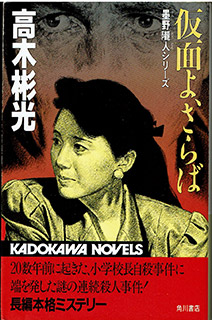
The first book in the Sumino Rojin series, Ogon no kagi (The key to the gold), was published in 1970. A short time after the publication of the third work in the series, Daitokyo Yotsuya kaidan (The Great Tokyo Yotsuya ghost story), in 1976, the author was unexpectedly hit with a major illness. Undoubtedly it was partly for this reason that the final work in the series, Kamen yo, saraba (Farewell, my mask), the announcement of which had appeared early on, only became a book after nearly 18 years had elapsed since the publication of the first work in the series.
In Kamen yo, saraba, Takagi does not only reveal the unexpected true identity of his brilliant detective, Sumino Rojin, but he also rises to the challenge of bringing to a resolution the wonderfully clever trick set up through the series. We cannot but admire the tenacity of purpose that allowed the writer, amidst his severe struggle with illness and his convalescence, to bring to a conclusion this scheme, which he had undoubtedly been nurturing from the beginning, in this novel which he believed at the time would be his final full-length work. Here we can feel acutely the "honkakudamashii" (the committed attitude of a true detective story writer) of Takagi, a spirit which makes us sit up with respect. This all happened shortly after I myself made my debut with Jukkakukan no satsujin (The Decagon House Murders).
(Written in March, 2011)
Translated by Adrian Pinnington
***
Information (Additional text by Shimpo Hirohisa; Translated by Kimura Jiro)
[Writer's Profile]
Ayatsuji Yukito (綾辻行人) was born in Kyoto in 1960. While majoring in education at Kyoto University, he joined the university's mystery club. After becaming acquainted with Shimada Soji (島田荘司), he made his debut as a mystery writer with The Decagon House Murders (Locked Room International, 2015; original title:『十角館の殺人』Jukkakukan no satsujin) on Shimada's recommendation in 1987 while still a graduate student. Inspired by Agatha Christie's And Then There Were None, this ambitious novel went beyond imitation by adding a refreshing twist, but it was criticized by many older readers, including reviewers, because they tended to believe in those days that realism was an important element in mystery fiction. However, the novel was welcomed by readers of the same generation as the author or younger, and was regarded as a "new classic" pioneering the "shin-honkaku school" (the new generation of puzzlers). His planned ten-book "yakata" (house) series began with Decagon and each of the following books was set in a different unique house. He won the Mystery Writers of Japan Award in 1992 for Tokeikan no satsujin (『時計館の殺人』The Watch House Murders, 1991), which was the fifth in the series. He is also an ambitious writer of horror novels, and one of his works was made into an animate television series and a live-action film in Japan and translated into English as Another (Yen Press, 2013; original title:『アナザー』Anaza, 2009).
[Writer's Favorite Mystery]
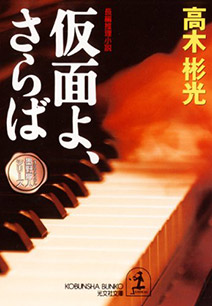
The literary talent of Takagi Akimitsu (高木彬光 1920-1995) was first discovered by Edogawa Rampo (江戸川乱歩), and he made his debut as a writer with The Tattoo Murder Case (Soho Crime, 1999; original title:『刺青殺人事件』Shisei satsujin jiken, 1949). With his senior colleague Yokomizo Seishi (横溝正史), he led the post-war full-length mystery fiction era in Japan. Amateur sleuth Kamizu Kyosuke (神津恭介), who was the hero of his early novels, is one of the most famous fictional detectives of the early post-war era. At the same time, he was influenced by the "social" mystery fiction of Matsumoto Seicho (松本清張), and produced the Prosecutor Kirishima Saburo (霧島三郎) series, including The Informer (Soho Crime, 2001; original title:『密告者』Mikkokusha,1965) and Honeymoon to Nowhere (aka. No Patent on Murder, Soho Crime, 1999; original title:『ゼロの蜜月』Zero no mitsugetsu, 1965) among others.
The Sumino Rojin (墨野隴人) series features an unidentified character called by the Japanese name (sumi-no-rojin) of The Old Man in the Corner created by Baroness Orczy. It took him 18 years (1970-1988) to complete all the five novels in the series, during high time he suffered from a serious illness. As a result, readers were given too much time to puzzle out the stories, and so the exposure of Sumino Rojin's supposedly unexpected identity regrettably turned out to be somewhat ineffective. With the final novel in the series, Kamen yo, saraba (『仮面よ、さらば』Farewell, My Mask, 1988), the author planned to stop writing, but then he published three more Kamizu Kyosuke novels with collaborators, although unfortunately they did not match up to the quality of the works from his old glorious days.
My Favourite Mystery #6
by Asano Atsuko
Cat of Many Tails (author: Ellery Queen)
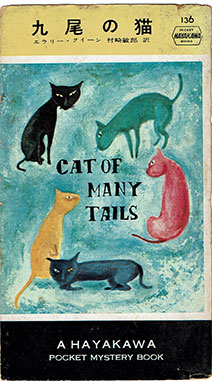
Last summer, I had a part of my house (which was first built more than thirty years ago) rebuilt, and I was able at last to add a study for myself, something which I had deeply longed for. I threatened and cajoled a good-hearted friend of mine, the managing director of a construction company, and was able to get the work done very economically. I even managed to have a loft built as a storeroom for my books, and I was highly satisfied. But it was just after all the work was finished that a serious incident occurred. My copy of Ellery Queen's Cat of Many Tails disappeared! However hard I looked, I couldn't find it.
It was one of my favorite books. I had read it so much that the cover was torn and the book had become tattered and threadbare. I just love Ellery Queen and I have all of the books in Japanese translation, albeit in paperback editions, in my collection. But of all of his (or their) works, it was this Cat of Many Tails that had especially and deeply impressed me. Of course, I love the way the mystery is solved and the interest of the storyline, but the most impressive and unforgettable aspect of the book is the portrait of Queen (the detective) as a human being and the depiction of his anguish over judging people. For me, this is a masterpiece because the murder is not treated simply as part of the mystery, but rather is philosophized upon in relation to human existence. Dear God, please send this book back to me!
(Written in March, 2015)
Translated by Adrian Pinnington
***
Information (Additional text by Shimpo Hirohisa; Translated by Kimura Jiro)
[Writer's Profile]
Asano Atsuko (あさのあつこ) was born in 1954 in Okayama Prefecture. She first came across mystery fiction by Arthur Conan Doyle, Agatha Christie, Ellery Queen and others, during her junior high school days, and discovered the interest of these works, but she herself has very seldom written detective stories.
She started publishing children's books from 1991, and became well-known among adult readers when her six-volume series, Batteri (『バッテリー』 Battery, 1996-2005), depicting junior high school students who devote themselves to playing baseball, was praised highly. She has written a great number of books, including historical novels.
Batteri was turned into a feature film in 2007 and also adapted into an anime television series. No. 6 (a nine-volume dystopian science fiction series, 2003-2011) is better known overseas than Batteri, because of its anime television adaptation in 2011. Moreover, its manga adaptation (Kodansha Comics, 2013-2014) created by Kino Hinoki (木乃ひのき) has also been translated into English.
[Writer's Favorite Mystery]
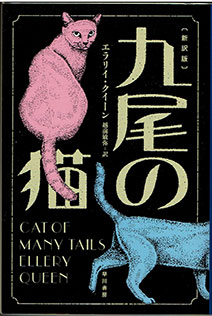
Perhaps the works by Ellery Queen, one of the collaborative pseudonyms of Frederic Dannay (1905-1982) and Manfred Lee (1905-1971), are more widely read in Japan than in the United States of America these days. Especially The Tragedy of Y (1932, originally published as by Barnaby Ross, another of their collaborative pseudonyms) is considered a first-rate popular novel, while his early novels with titles named after countries are also popular with beginning mystery readers. His later, more literary, novels are not as widely read in Japan as his earlier pure puzzlers, but Calamity Town (1942) was turned into a film in 1979, directed by Nomura Yoshitaro (野村芳太郎), with the title The Three Undelivered Letters (original title: 『配達されない三通の手紙』 Haitatsusarenai santsu no tegami).
Cat of Many Tails (1949) was long out of print in Japan, partly because the first Japanese translation in 1954 was inadequate. The second translation in 1978 also quickly went out of print and remained hard to get, despite having provided a fortunate opportunity for re-evaluation of the original novel. In August 2015, however, the novel came back into print in a new translation, as if granting Asano Atsuko's wish.
My Favourite Mystery #7
by Osawa Arimasa
The Darkest Hour (author: William P. McGivern)
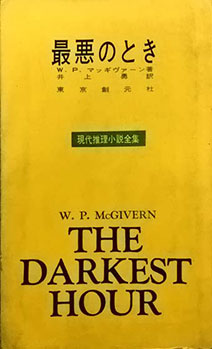
This is just a repetition of something I've already written or said in many places, but if I had never come across this book, then I might never have thought to read, let alone write, hardboiled detective mysteries.
Until then, what I had loved to read had entirely been traditional mysteries written by authors such as Ellery Queen, Freeman Wills Crofts and Agatha Christie. Then one day by chance I took up this book to read, and, without exaggeration, I experienced a shock as powerful as a blow to the head.
In this book, policemen are not always on the side of justice. Indeed, on the contrary, they even put the hero, their fellow policeman, in danger.
In a police force under the thumb of gangsters and riddled with corruption, the lonely fight of the hero, whose determination to serve justice unswervingly even exposes his own family to peril, formed a complete contrast to the famous detectives, secure in their own territory, that I had known previously. I felt thrilled, angry, sad, trembling. When I had finished reading and knew that this indeed was the genre known as hardboiled detective fiction, my fate was sealed.
(Written in February, 2006)
Translated by Adrian Pinnington
***
Information (Additional text by Shimpo Hirohisa; Translated by Kimura Jiro)
[Writer's Profile]
Osawa Arimasa (大沢在昌) was born in 1956 in Aichi Prefecture. Having aspired to be a mystery writer since his college days at Keio University, he entered a short mystery story contest sponsored by a mystery fiction magazine in 1979 after dropping out of the university, and won it with a hardboiled story, featuring an investigator in his 20's. As a result, he became a full-time writer without any experience of working in a nine-to-five job.
As he made his debut when young, he was popular mainly among his contemporary readers for about ten years, but the older he grew, the more mature his style became. When Shinjuku Shark (Vertical, 2007; original title: 『新宿鮫』 Shinjuku-zame, 1990), in which hot-blooded Inspector Samejima (鮫島) of the Shinjuku Precinct, dubbed "Shark", fights against organized crime, was praised by a wide range of readers, he established himself as a bestseller writer. The novel was then serialized due to popular demand, and the fourth novel in the Shinjuku Shark series won the Naoki Prize, the most famous award for popular literature, in 1993. This series contains eleven novels and one short story collection as of July 2018. The second novel in the series, The Poison Ape (Vertical, 2008; original title: 『毒猿/新宿鮫Ⅱ』 Doku-zaru: Shinjuku-zame II, 1991) was also translated into English.
Although he ambitiously writes comical mysteries and futuristic mysteries as well, he basically sticks to hardboiled fiction featuring private detectives or renegade cops. He served as president of the Mystery Writers of Japan from 2005 through 2009.
[Writer's Favorite Mystery]
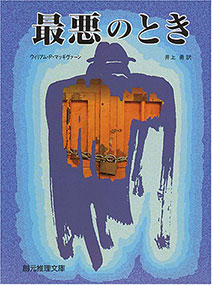
Jacket design is the 1993 edition)
William P. McGivern (1918-1982) was an American writer. A series of his rogue cop novels, including The Darkest Hour (1955; other title: Waterfront Cop) and Shield for Murder (1951), gave a refreshing shock to Japanese readers, and all of his first 15 novels were translated into Japanese, including Blondes Die Young (1952, written as by Bill Peters). However, it was quite rare for any writers or works to be influenced directly by McGivern in Japan, where people tend to trust and obey the police in general. Since the 1960's, none of his mystery novels have been translated into Japanese except Night of the Juggler (1975), and it is unfortunate that he is on his way to becoming an obscure writer that only a very few avid mystery readers remember.
My Favourite Mystery #8
by Osaka Go
L' Aiguille creuze(The Hollow Needle) (author: Maurice Leblanc)
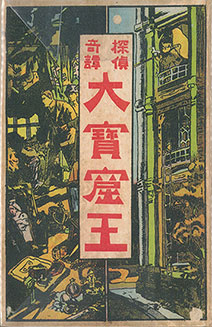
'My blood tingled with excitement' — it seems to me to be no exaggeration to say that this phrase was born to describe the effect of the adventures of Arsène Lupin.
When I was an elementary school student, there were no other books that I read with such rapt attention as these. I found the Sherlock Holmes books interesting as well, but the stories that really made 'my blood tingle with excitement' were after all those in the Lupin series.
Among these, I will never forget the first one I read: The Hollow Needle. Mystery, adventure, romance — the book is overflowing with all these ingredients of a successful entertainment. Lupin' s long speech towards the final chapter could be said to constitute Maurice Leblanc' s own declaration of his intent to write adventure stories.
When, in later years, I was asked by a publisher to choose any classic work that I liked and to produce a creative adaptation of it into Japanese for children, I chose this work without hesitation.
To be honest, when I came to read the work again as an adult, I found it to be rather casually constructed at certain points, and making a coherent version of it actually took me more time than writing one of my own books. Even so, I did not find the task in the least burdensome.
This will always remain one of my favorite books.
(Written in Augst, 2004)
Translated by Adrian Pinnington
***
Information (Additional text by Shimpo Hirohisa; Translated by Kimura Jiro)
[Writer's Profile]
Osaka Go (逢坂剛) was born in Tokyo in 1943. He became engrossed in hardboiled fiction, Western film and film noir in his high-school days. By the time he found a job at an advertising firm, following graduation from university, he had become fascinated with flamenco songs and started studying modern Spanish history as a hobby in order to understand them more deeply. This enthusiasm led him to complete a massive adventure novel, set in both Spain and Japan, which was double the length of the average Japanese mystery at that time. However, he felt that he, as a non-professional writer, needed to become a professional one before he could publish his great opus. He entered several short story contests and made his debut as a writer in 1980. He attracted great attention in 1986 with the first novel in the "Mozu" (The Shrike) series, which would be adapted for TV 28 years later, although the TV dramatization and the novel were very different in content. As a result, his first but as yet unpublished novel, The Red Star of Cádiz (Original title:『カディスの赤い星』 Kadisu no akai hoshi, 1986; English language edition: Kurodahan Press [Fukuoka], 2008), was finally published as he had wished. He won the Naoki Prize, a Mystery Writers of Japan (MWJ) Award, and a Japan Adventure Fiction Association Prize for this single novel, and established himself as a professional writer. He served as president of MWJ from 2001 through 2005.
[Writer's Favorite Mystery]
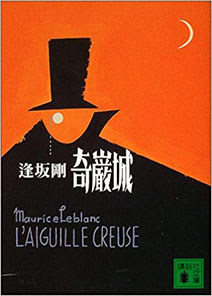
Maurice Leblanc (1864-1947) was a French writer. Arsène Lupin, a gentleman thief, who first appeared in a series of his short stories in 1905, was considered as merely one of the many rivals of Sherlock Holmes in the United Kingdom and the United States of America, but he became as popular in Japan as in France. Especially thanks to versions for younger readers, Lupin became one of the three most popular series characters in Japan, together with Arthur Conan Doyle's Sherlock Holmes and Edogawa Rampo's (江戸川乱歩) The Boy Detectives Club, in libraries at primary and secondary schools. L' Aiguille creuze (1909) was the first Lupin novel and is especially highly rated among the more than 20 volumes in the series. Three of the reasons why it has been read widely in Japan are: 1) it is not uncommon that thieves are portrayed as protagonists in kabuki and other traditional performing arts; 2) it is emotionally natural that people applaud thieves who steal from the rich; and 3) the novel has been fortunate enough since 1920 to have had talented translators each with a uniquely acute sense of style. The Japanese title, Kiganjo (The strange rock castle), was given then, and later translators followed suit. With the popularity of manga/anime original stories featuring a protagonist who claims to be Lupin's grandson, the books of the Lupin canon by Leblanc have been constantly read in Japan, in spite of the latest Sherlock Holmes boom with its many TV and film adaptations. Recently, Japanese manga writer Morita Takashi (森田崇) has faithfully been adapting all the Lupin volumes for manga in the original publication order, and several of these have already been translated into French as Arsène Lupin -- L'Adventurier.
My Favourite Mystery #9
by Konno Bin
Dead Aim (author: Collin Wilcox)
This work was the first of Collin Wilcox’s Lieutenant Hastings series to be translated and published in Japan. If this book had not been written, and I had not come across it, then I doubt that I would ever have thought of writing a police procedural.
When we think of American police procedurals, what first comes to mind is Ed McBain’s 87th Precinct series, but to tell the truth, I find the Lieutenant Hastings series more to my taste. Although they are sometimes criticized as merely an imitation of the 87th Precinct series or a rehash of the Martin Beck novels of Maj Sjöwall and Per Wahlöö, the figure of the emotional, down-to-earth detective struck me as fresh and I felt strongly drawn to the character. How does a detective feel when carrying out an investigation? How does he get along with his subordinates and colleagues? The way such topics are handled in this work really taught me how to write a police procedural. The fact that a novel such as this could have been written at such a time makes me feel again the depth and richness of the American mystery genre.
(Written in March 2014)
Translated by Adrian Pinnington
***
Information (Additional text by Shimpo Hirohisa)
[Writer's Profile](Translated by Edward Lipsett)
Konno Bin (今野 敏) was born 1955, Hokkaido, Japan. Professional writing career from 1978, in a wide range of fields including hard-boiled detective, action, and science fiction, winning acclaim especially with his police procedurals. Major works include the Keishicho Azumi-han series (Chief Azumi, Tokyo Metropolitan Police Department), later developed as a television series under the name Hancho, and the Inpei sosa series (Cover-Up Investigation) focusing on higher-level officers. The latter has won four awards, including the Mystery Writers of Japan Award. He served as the president of MWJ from 2013 through 2019.
Additional details here:
http://www.booksfromjapan.jp/authors/item/569-bin-konno
[Writer's Favorite Mystery](Translated by Kimura Jiro)

American mystery writer Collin Wilcox (1924-1996) created the series of novels featuring Lt. Frank Hastings of the San Francisco Police Department. Since Bill Pronzini’s Nameless Detective series had been introduced and known in Japan before the Hastings series, Twospot (1978), Pronzini and Wilcox’s collaborative novel featuring both the Nameless Detective and Lt. Hastings, was the first one in the Hastings series to be translated into Japanese, and Dead Aim (1971), written by Wilcox alone, was the second. Eventually, all the first ten Hastings novels were translated except The Disappearance (1970) and Long Way Down (1974). Swallow's Fall (1983) was written at the request of the large Japanese publisher which had been issuing the Hastings novels as paperback originals, serialized on the pages of the publisher’s famous weekly magazine, and published first in Japan. In 1983, The Watcher (1978) was dramatized on NTV, starring Furuya Ikkou (古谷一行). The later eight novels have not been translated yet, and nowadays the Hastings novels seem to have been almost completely forgotten in Japan. However, very much influenced by Wilcox’s Lt. Frank Hastings novels, as well as Maj Sjöwall and Per Wahlöö’s Martin Beck novels, Konno Bin’s police procedurals continue to enjoy an enduring popularity in Japan.